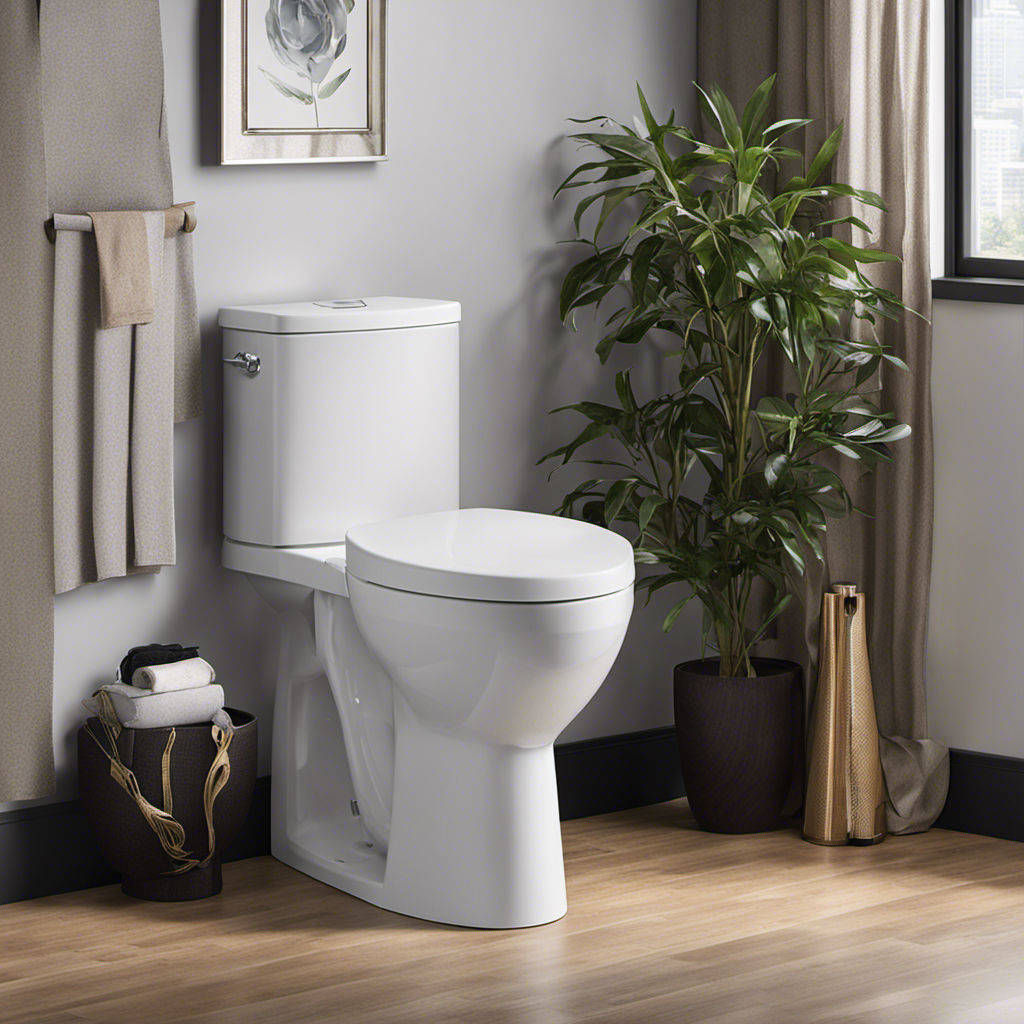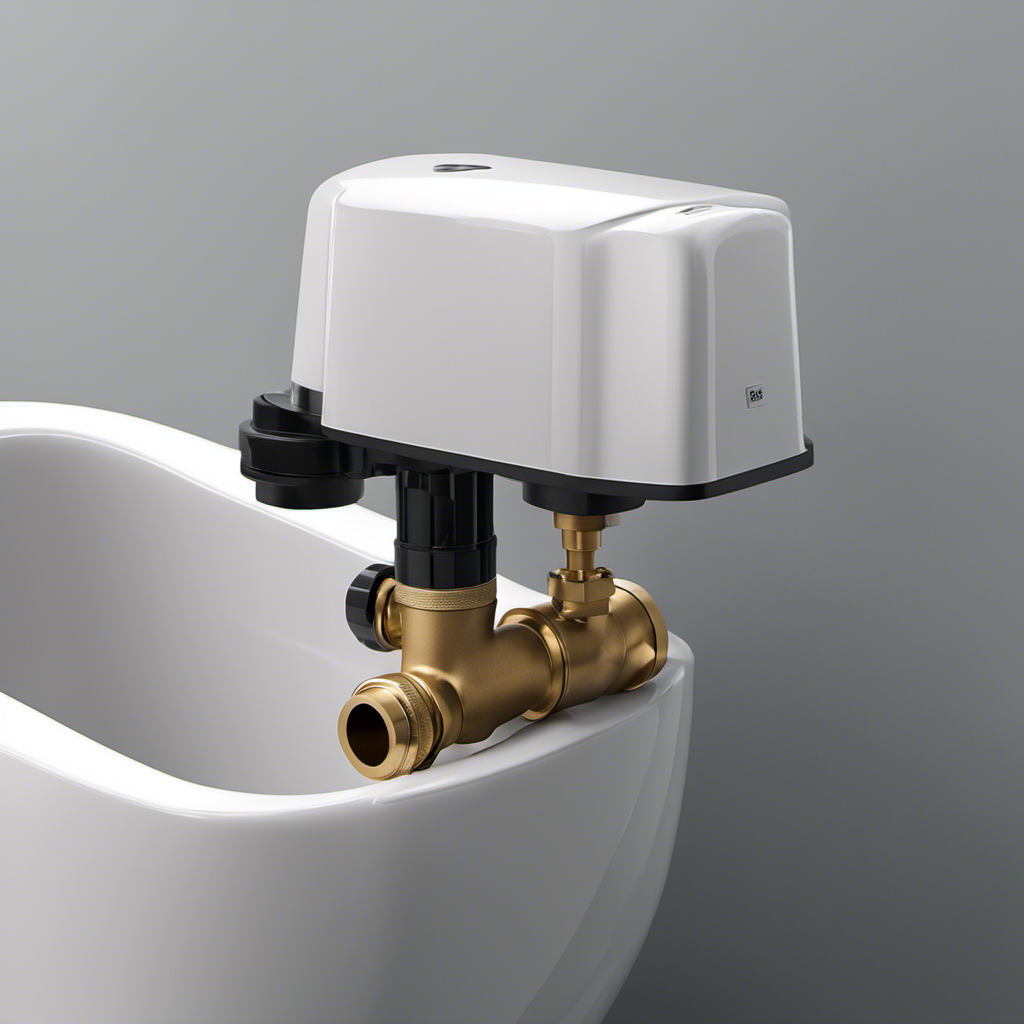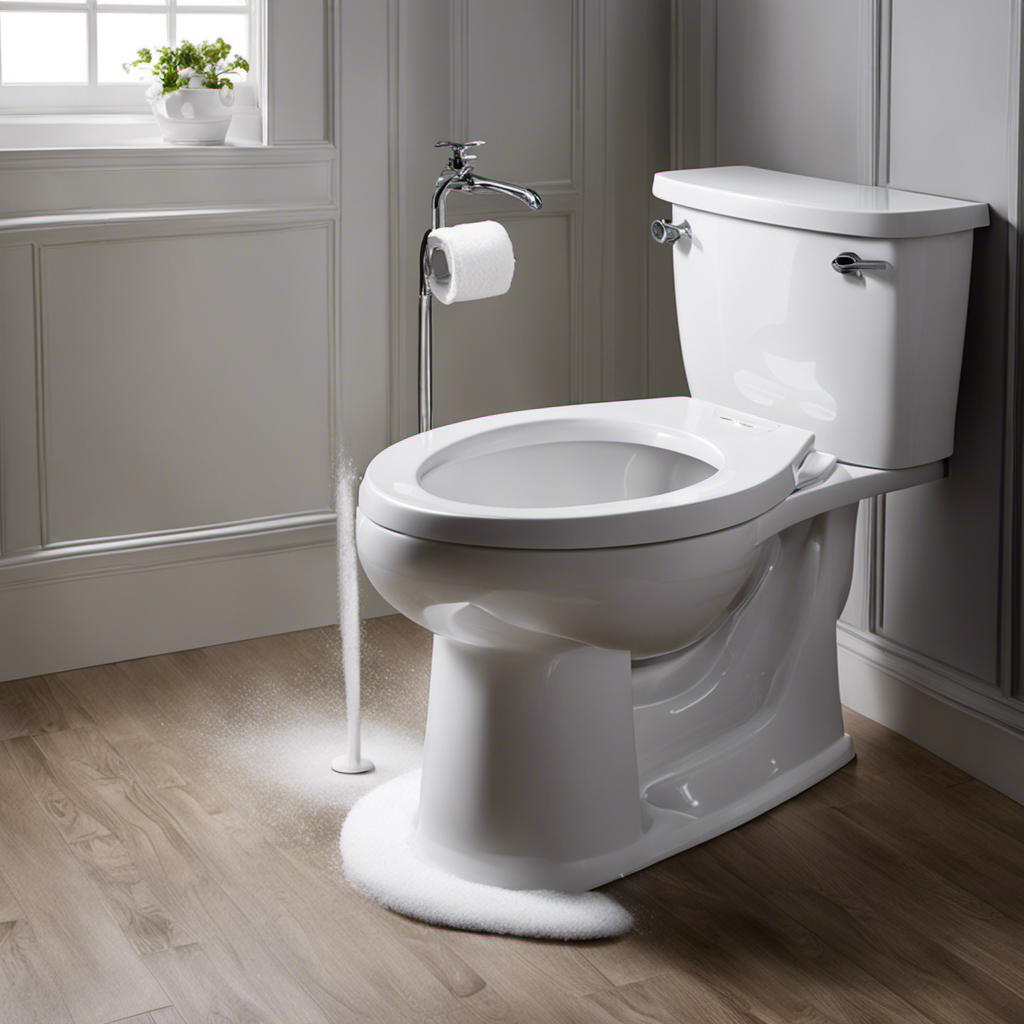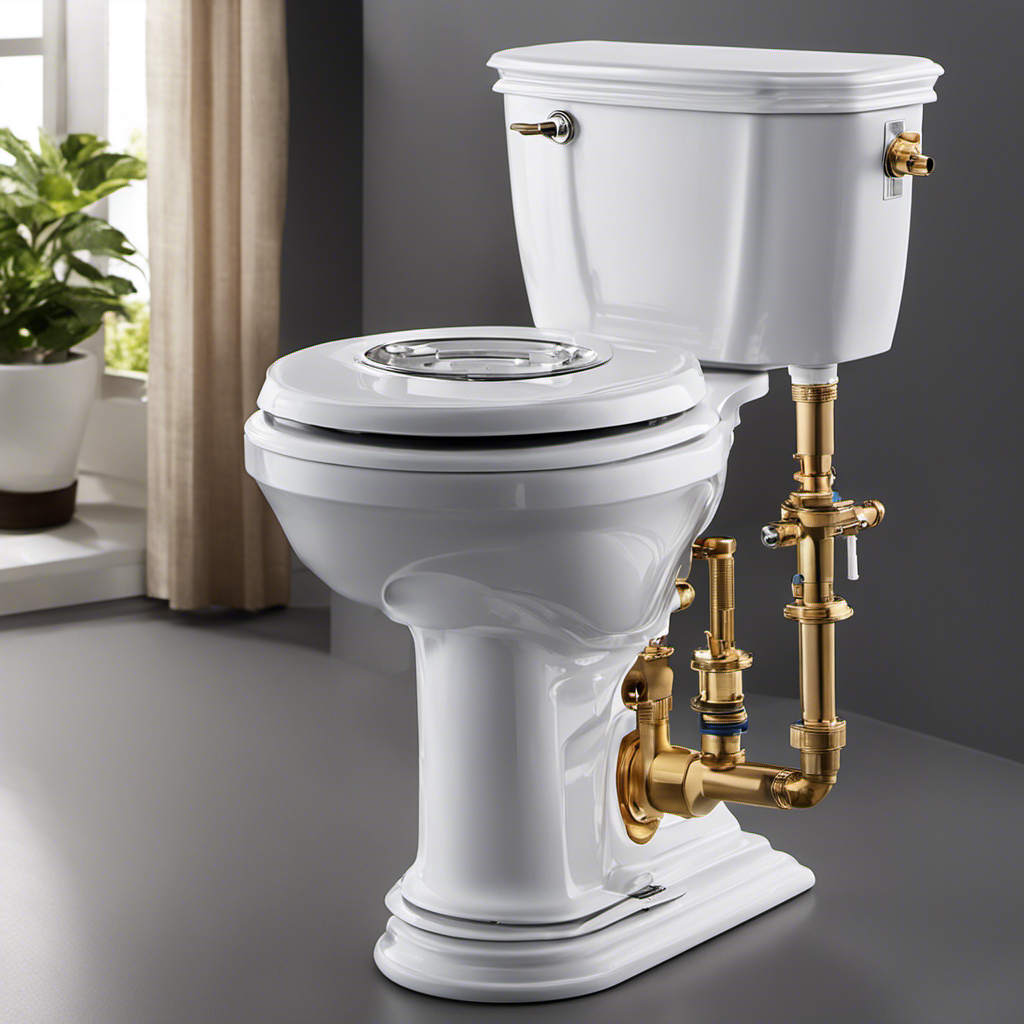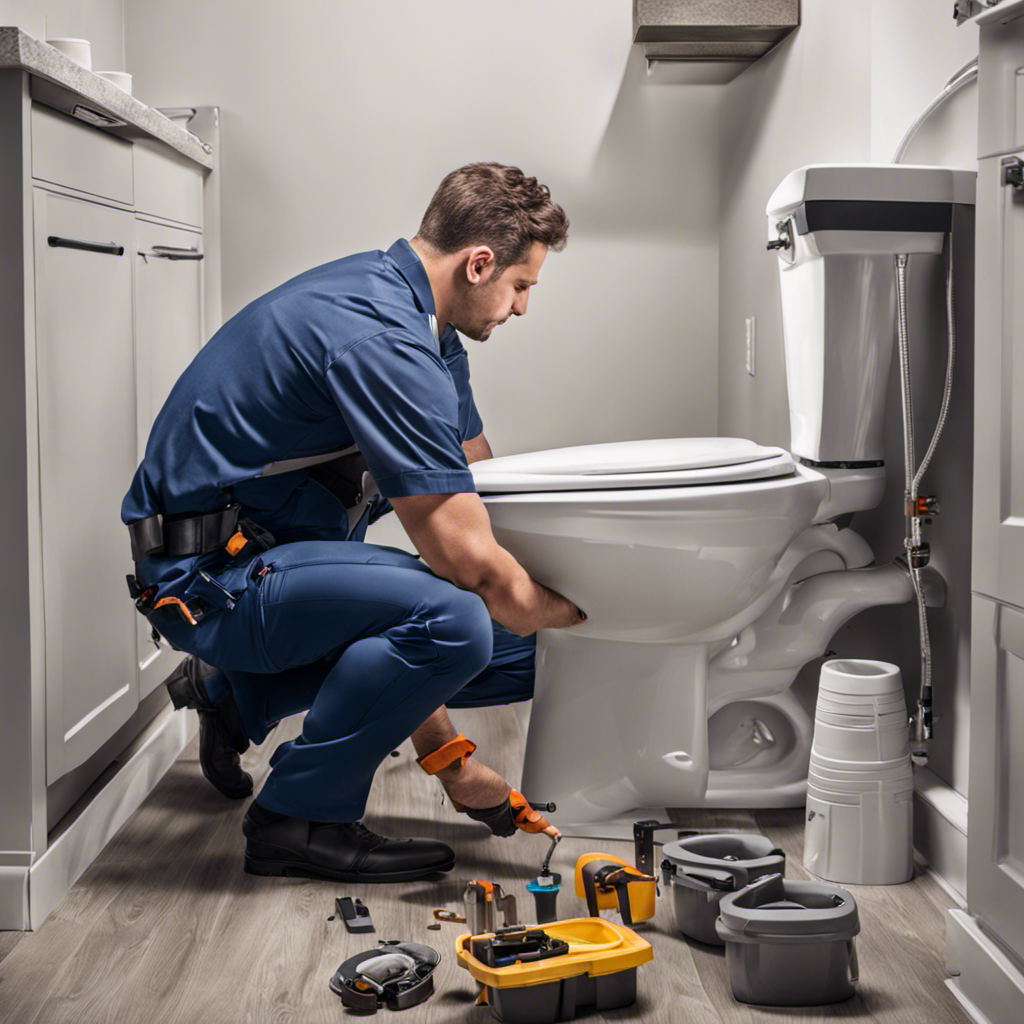I know what you’re thinking: ‘How tall is an ADA toilet?’ Well, let me tell you, it’s a crucial question to ask if you want to ensure accessibility and comfort in your bathroom.
In this article, we will explore the standard height requirements for ADA toilets, how to measure their height, and the guidelines set by the ADA.
Additionally, we will discuss factors to consider when choosing the right toilet height, common installation mistakes to avoid, and the benefits of using an ADA-compliant toilet.
So, let’s dive in and find the perfect height for your ADA toilet.
Key Takeaways
- ADA toilets have a standard height range of 17 to 19 inches for the toilet seat.
- Adjusting the toilet seat height considers factors like mobility limitations and body size.
- ADA-compliant toilet height promotes independence and dignity for users.
- Customizable toilet height meets the specific needs of individuals.
Standard Height Requirements for ADA Toilets
The standard height for ADA toilets is typically between 17 and 19 inches. These specific measurements are crucial in ensuring the accessibility and comfort of individuals with disabilities.
ADA-compliant toilets are designed with precision and accuracy to meet the needs of users. Measuring accuracy plays a pivotal role in achieving the required height, as even a slight deviation can impact the overall accessibility.
Furthermore, ergonomic design is a key consideration in ADA toilet height. The height range is carefully selected to provide optimal comfort and ease of use for individuals with mobility challenges.
Measuring the Height of an ADA Toilet
When it comes to ADA toilet height standards, it’s crucial to ensure that the toilet is accessible for individuals with disabilities.
Measuring for accessibility involves determining the correct height of the toilet seat and making adjustments as needed.
Understanding and accommodating individual needs is essential to provide a comfortable and safe bathroom experience for everyone.
ADA Toilet Height Standards
ADA toilet height standards dictate the required height for accessible toilets. These standards are in place to ensure that individuals with mobility challenges can use the toilet comfortably and safely.
Here are three important points to understand about ADA toilet height standards:
-
Standard Measurement: According to ADA guidelines, the height of the toilet seat should be between 17 and 19 inches from the floor. This range allows for easy transfer from a wheelchair or mobility device to the toilet seat.
-
Toilet Seat Compatibility: ADA toilets should be compatible with standard toilet seats. This means that you can easily find a seat that fits the toilet without any modifications or special requirements.
-
Accessibility Requirements: ADA toilet height standards are part of a broader set of accessibility requirements for public restrooms. These requirements also include features like grab bars, clear floor space, and accessible signage.
Measuring for Accessibility
Measuring for accessibility involves determining the appropriate height range for a toilet seat in order to accommodate individuals with mobility challenges. The proper height is crucial for ensuring comfort and ease of use for individuals with disabilities. The ADA (Americans with Disabilities Act) provides guidelines for toilet seat height to promote accessibility. Measuring techniques can include using a measuring tape to determine the distance from the floor to the top of the toilet seat. This measurement should fall within the ADA standards, which specify a height range of 17 to 19 inches from the floor.
To further understand the importance of proper height, let’s take a look at the following table:
| Height (inches) | Description |
|---|---|
| < 17 | Too low, may require excessive effort to stand up |
| 17-19 | Ideal height range for individuals with mobility challenges |
| > 19 | Too high, may cause discomfort or difficulty in sitting down |
Adjusting for Individual Needs
Adjusting for individual needs involves considering factors such as mobility limitations, body size, and personal preferences to ensure that the toilet seat height is tailored to each person’s specific requirements. When it comes to adjusting for medical conditions, it’s crucial to understand the ergonomic design advantages of a properly adjusted toilet seat height.
Here are three key points to consider:
-
Improved accessibility: By adjusting the height of the toilet seat, individuals with mobility limitations can experience greater ease and comfort while using the bathroom. This adjustment can significantly reduce the risk of falls and injuries.
-
Enhanced posture: A properly adjusted toilet seat height promotes better posture during use, reducing strain on the lower back and joints. This ergonomic advantage can help alleviate pain and discomfort for individuals with various medical conditions.
-
Increased independence: By customizing the toilet seat height to suit individual needs, individuals can maintain their independence and perform personal hygiene tasks with greater ease and confidence.
Considering these factors and making necessary adjustments can greatly improve the overall bathroom experience for individuals with medical conditions, providing them with greater comfort, safety, and independence.
Understanding ADA Guidelines for Toilet Height
Toilet height requirements under the ADA guidelines ensure accessibility for individuals with disabilities. When it comes to measuring accuracy, it is crucial to follow the specific guidelines set forth by the ADA.
The toilet seat height should be between 17 and 19 inches from the floor to the top of the seat. This measurement is crucial to ensure that individuals with disabilities can transfer safely and comfortably from their wheelchair to the toilet.
Additionally, the installation process is also important to guarantee that the toilet is securely mounted and meets the ADA requirements. Proper installation ensures stability and support for individuals with disabilities, reducing the risk of accidents or injuries.
It is essential to follow the ADA guidelines accurately to create an inclusive and accessible environment for all individuals.
Factors to Consider When Choosing an ADA Toilet Height
When it comes to choosing the optimal toilet seat height, there are several factors to consider that can greatly impact accessibility and comfort.
One of the key considerations is complying with ADA regulations, which set specific guidelines for accessible toilet heights. These regulations aim to ensure that individuals with disabilities can easily and safely use the restroom facilities.
Optimal Toilet Seat Height
The optimal toilet seat height for individuals with mobility issues is determined by their specific needs and comfort level. When designing a toilet seat for optimal comfort and accessibility, there are several ergonomic considerations to keep in mind.
-
Height adjustment: The toilet seat should be adjustable in height to accommodate individuals of different heights and mobility levels. This allows for customization and ensures that the user can sit and stand up comfortably.
-
Seat shape: The shape of the toilet seat should be ergonomic, providing adequate support and stability. A contoured seat with a wider front edge can help prevent pressure points and enhance comfort.
-
Grab bars: Installing grab bars near the toilet can provide additional support and stability for individuals with mobility issues. These bars should be strategically placed at an optimal height and within reach of the user.
Accessibility and Comfort
You can enhance your comfort and accessibility by incorporating these design elements into your bathroom. When it comes to addressing accessibility challenges, an ergonomic design is crucial. By considering the needs of individuals with disabilities or mobility issues, you can create a bathroom that is safe and convenient for everyone to use. One important aspect to consider is the height of the toilet. An ADA-compliant toilet typically has a height between 17 and 19 inches, which is higher than standard toilets. This makes it easier for individuals with limited mobility to sit down and stand up. Additionally, installing grab bars and non-slip flooring can further improve accessibility and prevent accidents. By prioritizing ergonomic design, you can create a bathroom that is both functional and comfortable for all users.
| Design Element | Benefits |
|---|---|
| ADA-compliant toilet | Enables easier sitting and standing for individuals with limited mobility |
| Grab bars | Provides support and stability when using the toilet |
| Non-slip flooring | Reduces the risk of accidents and falls |
| Wide doorways | Allows for easy maneuverability with mobility aids |
| Adjustable showerheads | Accommodates users of different heights and abilities |
Complying With ADA Regulations
To ensure compliance with ADA regulations, it’s important to consider the height of the bathroom fixtures. When it comes to ADA toilets, there are specific installation requirements and building codes that must be followed. Here are three key considerations when it comes to complying with ADA regulations:
-
Seat Height: ADA-compliant toilets should have a seat height between 17 and 19 inches from the floor. This ensures that individuals with mobility limitations can easily transfer onto and off the toilet.
-
Grab Bars: Installing grab bars near the toilet is crucial for providing support and stability. These bars should be placed at a height of 33 to 36 inches from the floor and extend at least 54 inches along the back wall.
-
Clear Floor Space: ADA regulations also require a clear floor space of at least 60 inches in width and 56 inches in depth in front of the toilet. This allows for easy maneuverability for individuals using mobility aids.
Common Mistakes to Avoid When Installing an ADA Toilet
Make sure you don’t overlook any common mistakes when installing an ADA toilet. One common mistake is not measuring accurately. It’s important to measure the space where the toilet will be installed to ensure it meets ADA requirements. Another mistake to avoid is not properly securing the toilet to the floor. ADA toilets require extra stability, so make sure to use the correct hardware and follow the manufacturer’s instructions for installation. Additionally, overlooking the importance of grab bars can be a costly mistake. ADA regulations require grab bars to be installed near the toilet for accessibility. Here is a table summarizing some important installation tips:
| Common Mistakes to Avoid |
|---|
| Not measuring accurately |
| Improperly securing toilet |
| Overlooking grab bar installation |
Adjustable Height Options for ADA Toilets
When choosing an ADA toilet, it’s important to consider the adjustable height options available. Adjustable height toilets offer several benefits that can greatly enhance the user’s experience. Here are three key reasons why adjustable height toilets are beneficial:
-
Customizable Comfort: With adjustable height toilets, users can easily adjust the seat height to a position that is most comfortable for them. This ensures that individuals of all heights and abilities can use the toilet comfortably and without strain.
-
Accessibility for All: Adjustable height toilets meet the requirements of ADA standards, providing accessibility for individuals with disabilities. The ability to adjust the height allows for easier transfers from wheelchairs and promotes independence for users with mobility challenges.
-
Flexibility for Different Users: Adjustable height toilets accommodate different users in shared spaces. Whether it’s a family bathroom or a public restroom, the ability to customize the height ensures that everyone can use the toilet comfortably and safely.
These benefits make adjustable height toilets an excellent choice for ADA-compliant installations.
Benefits of Using an ADA-Compliant Toilet Height
The adjustable height options on ADA-compliant toilets provide greater comfort and accessibility for users of all abilities.
One of the key benefits of using an ADA-compliant toilet height is the ability to customize the toilet to meet the specific needs of individuals.
The adjustable height feature allows users to lower or raise the toilet seat to a comfortable position, reducing strain on the knees and improving overall comfort during use.
Additionally, the adjustable height options provide advantages for individuals with mobility issues or disabilities, as they can easily transition to and from the toilet without the need for excessive bending or assistance.
This promotes independence and dignity for users, enhancing their overall bathroom experience.
Frequently Asked Questions
Are There Any Specific Regulations Regarding the Height of ADA Toilets in Commercial Buildings?
There are specific regulations for the height of ADA toilets in commercial buildings. These regulations ensure accessibility for people with disabilities. Compliance with these guidelines is important to meet the needs of all individuals.
Can I Use a Regular Toilet Instead of an Ada-Compliant One in a Public Restroom?
Yes, you can use a regular toilet instead of an ADA-compliant one in a public restroom. However, it’s important to consider that adapting regular toilets may not provide the same accessibility and comfort as ADA-compliant alternatives.
How Does the Height of an ADA Toilet Compare to a Standard Residential Toilet?
The height of an ADA toilet is higher than a standard residential toilet. This is to accommodate individuals with mobility issues. Using an ADA compliant toilet provides accessibility and comfort for those who need it.
Are There Any Recommended Accessories or Modifications That Can Be Added to ADA Toilets to Enhance Accessibility for Individuals With Disabilities?
Recommended accessories and modifications can be added to ADA toilets to enhance accessibility for individuals with disabilities. Installing grab bars, raised toilet seats, and lever-style flush handles are just a few examples.
Can the Height of an ADA Toilet Be Adjusted to Accommodate Different Users’ Needs?
Yes, the height of an ADA toilet can be adjusted to accommodate different users’ needs. ADA toilets have specific height requirements to ensure accessibility for individuals with disabilities.
Conclusion
After exploring the intricacies of ADA toilet height, it becomes clear that precision is key. The standard height requirements, measuring techniques, and guidelines outlined in this article ensure that individuals with disabilities can access and use bathroom facilities comfortably.
By avoiding common mistakes and considering factors such as user needs and adjustable height options, a truly accessible environment can be achieved.
The benefits of using an ADA-compliant toilet height are immense, allowing for equal and dignified access for all.
